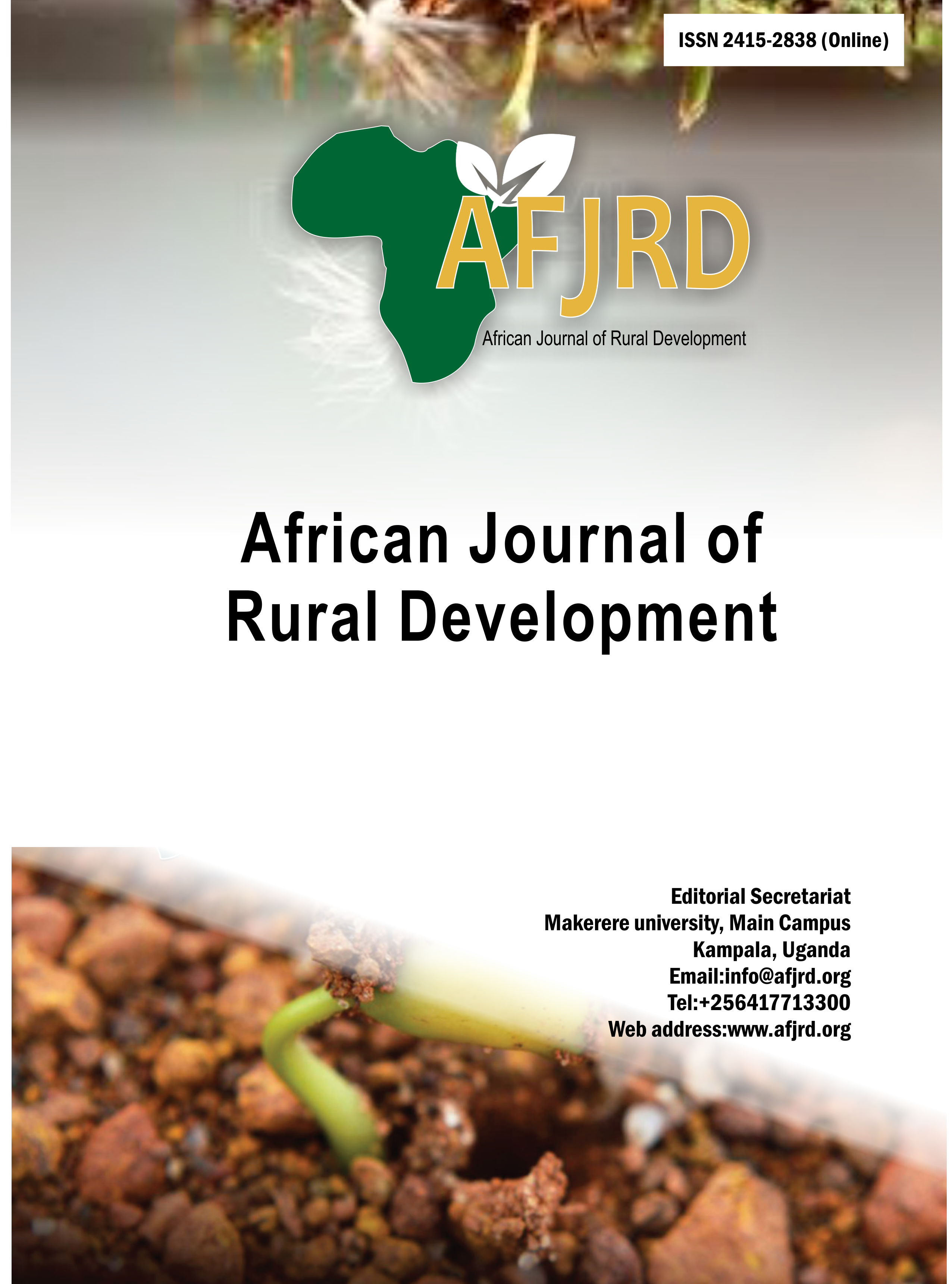The influence of extension approaches on uptake of postharvest technologies among maize farmers in Uganda
Main Article Content
Abstract
High postharvest losses exist among farmers in sub-Saharan Africa despite the introduction of
several improved postharvest handling technologies. This is indicative of low adoption associated
with dissemination approaches used. This study assessed postharvest technology uptake and maize
postharvest losses among smallholder farmers in Kamuli and Apac districts of Uganda. Random
sampling was used to select 108 farmers from 12 farmer groups in the two districts receiving extension
services using the participatory and farmer to farmer extension approaches. Farmers under both
approaches were trained in good postharvest handling technologies and practices. Under farmer to
farmer extension approach, farmers were trained by trained farmers while under the participatory
approach, farmers were trained by researchers and engaged in on-farm trials. The assessment for
losses was done at harvest, drying and storage. The promoted technologies were tarpaulins, raised
racks, hermetic bags and metallic silos. Uptake of the promoted technologies was higher among the
farmers under the participatory approach. Total quantitative losses reduced significantly (p≤0.05) at
post-intervention by 64.6% and 32% under the participatory approach and farmer to farmer approach,
respectively. Similarly, mold infection in maize reduced by 17.3% and 4% under the participatory
approach and farmer to farmer approach, respectively from 90.47±5.11% pre-intervention. The
aflatoxin level in maize reduced significantly from 46.63±4.84ppb pre-intervention to 8.07±1.51ppb
and 21.47±2.73ppb under the participatory approach and farmer to farmer approach group postintervention,
respectively. Participatory extension approach resulted into higher technology uptake
and subsequent lower quantitative losses, mold infection and aflatoxin contamination of maize.
Article Details

This work is licensed under a Creative Commons Attribution 4.0 International License.
